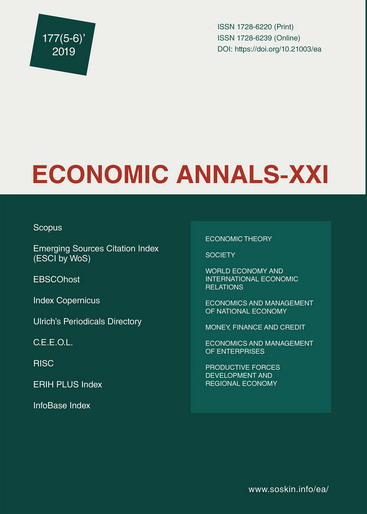Evaluation of the optimal ratio for consumption and income taxes with the use of econometric methods
Evaluation of the optimal ratio for consumption and income taxes with the use of econometric methods
Author(s): Anna Tikhonova, Zhanna Telegina, Anastasia Babanskaya, Alla GrudnevaSubject(s): Public Finances, Fiscal Politics / Budgeting
Published by: Institute of Society Transformation
Keywords: Consumption Taxes; Corporate Tax; Income Tax; Tax Rate; Tax Revenue Structure; Dispersion Matrix; Correlation; Homoscedasticity; Tax Rate Elasticity;
Summary/Abstract: The authors examines the dependence of tax rates by direct and indirect taxes. The research methodology is based on the authors’ approach based on the construction of scatter diagrams, as well as the use of correlation and regression analysis. To calculate regression indices, data of 2007-2018 was sampled from 87 countries (10 indicators), including countries of different types (third world, developing and developed). The authors analyse the structure of tax revenues by type of taxes in the EU, depending on the socio-economic development of the country. The results of the analysis show no clear dependence between VAT and corporate tax rates. However, there is correlation between the rate of VAT and personal income tax. Mostly it is due to the level of socio-economic development of the countries. Economically developed EU countries replenish the state budget revenues mostly by direct taxes. However, if indirect tax rates are high, their share in the national GDP is still quite remarkable (for example, in Denmark and Sweden). Meanwhile, in developing countries there is a clear predominance of consumption taxes in GDP (Croatia, Hungary). At the same time, there is a significant impact of political factors that are not amenable to mathematical evaluation. This, however, explains the results obtained by the authors. It has been noted that tax revenues from direct taxes prevail in developed countries, whereas developing countries prefer indirect taxes.
Journal: Економічний часопис - ХХІ
- Issue Year: 177/2019
- Issue No: 05+06
- Page Range: 44-52
- Page Count: 9
- Language: English

